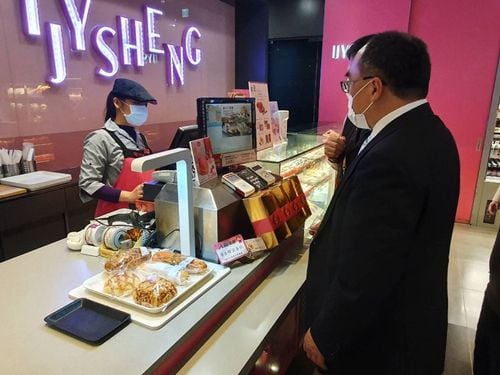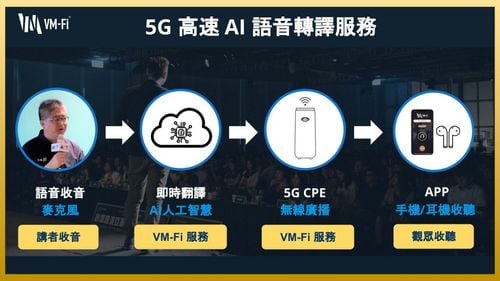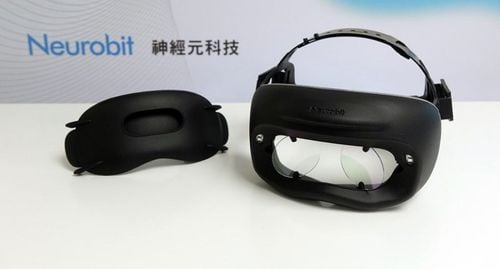【2021 Solutions】 After eight years of hard work, LIPS Corporation is poised to seize the 3D sensor market worth tens of billions of dollars
2D industrial cameras of European, American and Japanese brands have been popular in the market for many years. The market has been reshuffled as it transitions from 2D to 3D. The domestic brand LIPS, which mainly focuses on 3D cameras, has taken advantage of the trend and launched a variety of 3D camera from standard to industrial models. It provides total solutions through hardware, software, and systems, has become a hot commodity in the market. Since its establishment eight years ago, LIPS has focused on the 3D sensor market and aims to become a leading brand in machine vision.
The 3D image and sensor market will exceed US$10 billion in 2026 with an annual growth rate of 14%
According to forecasts of Yole Développement, the 3D image and sensor market will grow from US$6.8 billion in 2020 to US$15 billion in 2026, with a compound annual growth rate reaching 14.5%. Among them, the mobile and consumer markets will account for 46%, becoming the mainstream of the market, followed by the automotive and industrial fields, accounting for 22%. In terms of mobile and consumer markets, in addition to mobile phones, 3D sensor technology has a wide impact on the consumer market, including: tablets, VR/AR, robot vacuum cleaners, and AIoT (AI combined with IoT). For example, the 3D facial recognition of Apple's iPhone is the most popular 3D sensor technology today.
LIPS focuses on the development of 3D vision and AI, providing software development kits and software and hardware solutions. The software development kit is based on 3D depth images combined with AI algorithms, and can be quickly applied to industrial automation, smart logistics, smart healthcare, smart retail, industrial safety, and automotive assistance systems.
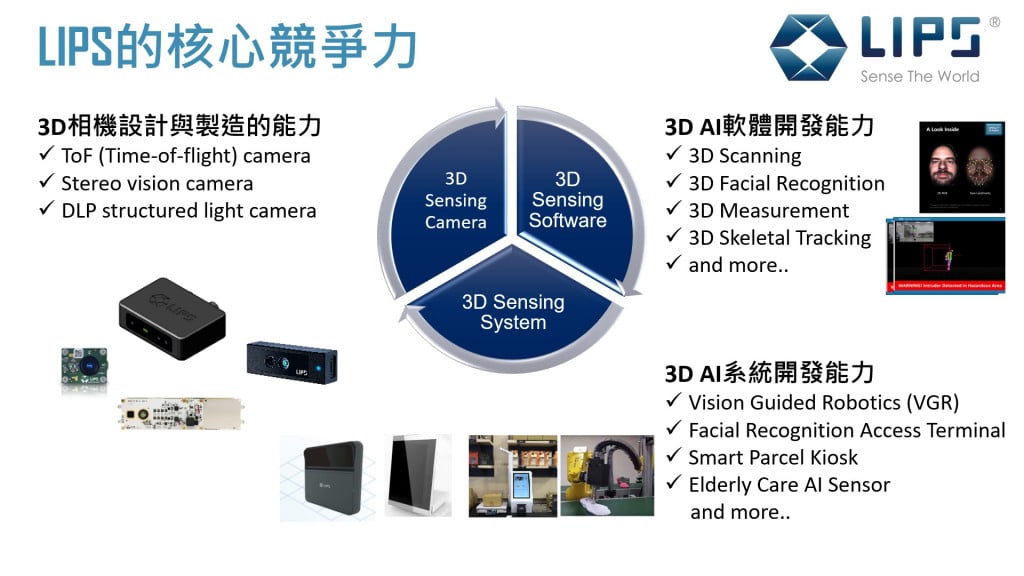
▲ LIPS has three core competencies.
Benson Lee, chief marketing officer of LIPS, said that 3D depth cameras integrate optics, electronics, mechanisms, parallel processing, algorithms, and AI, and has a high technical threshold. The three most common 3D sensor technologies are Time-of-Flight (TOF), stereo, and structured light depth cameras. The company provides 3D sensor total solutions. Benson Lee also pointed out that the company’s has an advantage in 3D sensor end-to-end solutions:
1. In terms of 3D depth cameras, it covers three technologies: ToF, stereo, and structured light. It is rare for a manufacturer to have all three technologies at the same time.
2. 3D sensor intermediary software supports AI sensor intermediary software, such as: facial recognition, head count, body tracking, gesture recognition, and spatial measurement.
3. One-stop solutions for 3D sensor systems, such as: 3D scanners, advanced driving assistance systems, and facial recognition systems are provided as standard products and can be customized according to customer needs. The company has become the best 3D AI technology partner for many iconic customers around the world.

▲ LIPS 3D vision guided robot solution.
Obtained 30 patents around the world, LIPS products reach deep into the Japanese market
LIPS has obtained more than 30 patents for its 3D AI technology, mainly in the United States, China, and Taiwan. Its marketing strategy has shifted from exports to domestic sales, starting with Japan and working with tier one Japanese customers, such as: multinational tech company in precision ceramics, one of the top eight electric machinery companies in Japan, and Japanese device manufacturing and solutions providers. The company has shipped large quantities of goods to several world class customers, such as the multinational tech company in precision ceramics, the largest manufacturer of industrial self-propelled vehicles in Germany, and one of the top eight electric machinery companies in Japan. Among them, the LIPS 3D camera supports the leading AI company Isaac and has been fully adopted for autonomous mobile robots (AMR) in the factory of the largest industrial self-propelled vehicle manufacturer in Germany. LIPS has also obtained a supplier code of the largest industrial self-propelled vehicle manufacturer in Germany.
LIPS also provides the best 3D vision solution for the platform of the leading AI company, and can be integrated into the automation platforms of leading AI companies Isaac and Jetson. This platform mainly provides total solutions for robotic arms, factory automation, AGV, and self-propelled vehicles. LIPSedge supports the SDK of the leading AI company Isaac, and there is currently only a handful of certified 3D cameras.
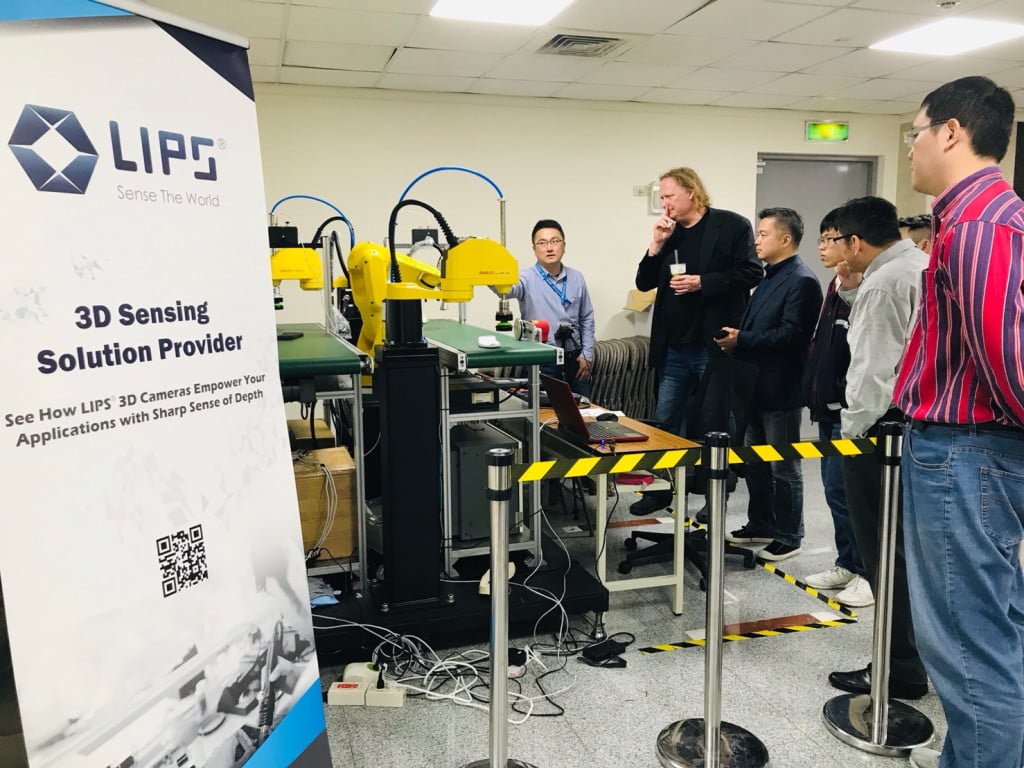
▲ Mr. Luke Liu introduces the robotic arm.
The 3D sensor solution provided by LIPS is more accurate than 2D. It uses 3D skeleton technology to provide a safe "3D virtual fence" for robotic arms, which were provided to the robot factory of a Japanese multinational tech company that makes precision ceramics. It is expected to become the standard equipment of robotic arms around the world.
The 3D measurement market has unlimited potential, targeting the global logistics and transportation industry
After the pandemic, LIPS actively invested in related applications and is currently targeting logistics and industrial automation solutions. Besides application in virtual fences, 3D package size measuring machines used in the logistics and transportation industry are developing the fastest and the most mature. The product has entered the Japanese market through Japanese partners, and has unlimited potential for application in post offices, logistics stores, and convenience stores.
LIPS' strategy is to first enter the Japanese market and then expand to the global market after establishing successful application cases. Benson Lee pointed out that the technical threshold of 3D measurement algorithms is extremely high. Japanese logistics companies deploy it in stores to measure irregular items, such as suitcases, shopping bags, and paper bags. Manual measurement was time-consuming and labor-intensive. The use of 3D cameras to measure length, width, and height greatly reduces the manpower requirement, and gives store clerks more time to serve customers properly.
LIPS 3D measuring machines have been certified by Japan's top three logistics solution providers. In addition to 3D measuring machines, LIPS is also actively developing other logistics solutions, such as assembly lines and mobile versions. Customers include the world's top logistics companies. LIPS hopes to provide 3D measuring solutions to post offices, convenience stores, and logistics centers worldwide, and has gained one-third of the market share in logistics automation. LIPS was founded in 2013 by Luke Liu, who studied at MIT. The company is highly technology-oriented and specializes in 3D sensor and AI technology. It uses depth cameras with software algorithms to provide machine vision and AI solutions that meet customer needs, and applies the solutions in various industries.
